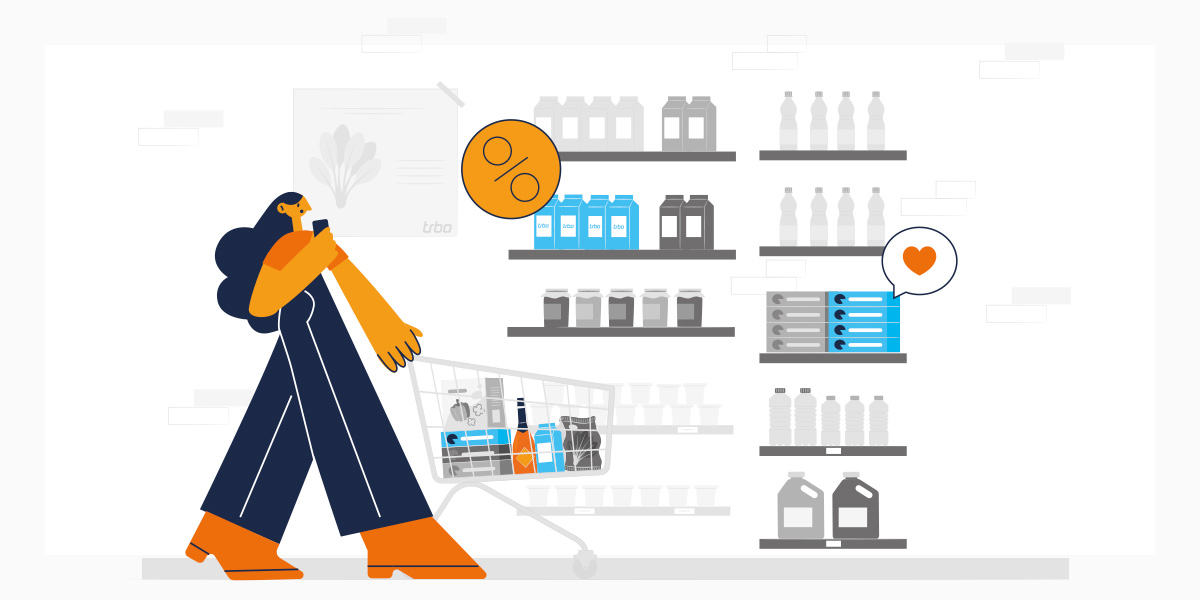A customer walks through the door and, suddenly, the supermarket’s entire assortment shifts. Products that they buy regularly are waiting for them right at the entrance. If they are a vegetarian, the meat counter is filled with meatless alternatives and the salesperson even has some interesting recipes ready for them to try. In physical stores, of course, this is wishful thinking. In e-food retail, however, it’s been around for a long time. So it’s no wonder that online supermarkets are becoming more and more popular. Today, we’ll show you how you too can make your own e-food store a reality.
Tip 1: Offer your customers personal advice, recommendations and tips
Online store personalization should not be exclusively about making food shopping easier for customers: it should also provide inspiration, like recipes and cooking tips. These can even be adapted to the customer’s most frequently purchased products. And since eating with company is more fun than eating alone, store operators can even make the recipes sharable on social media or WhatsApp. This also simplifies barbecue or brunch planning.
In addition to recipes, you can show customers individual offers. These can be used anywhere in the online store where users are browsing: on the homepage, a product detail page or even in the shopping cart. Point-of-sale products, by the way, can also be sold easily online. You can show items such as chewing gum in the shopping cart before customers complete their purchase and so that they find their way to the checkout, even though the customer didn’t originally intend to buy them.
Tip 2: Adapt your website to the interests of your users
If retailers want to personalize their online store, they must first distinguish between existing customers and new customers. For existing customers, retailers can use data collected in the past to configure their website. It’s easy to find out what kind of diet a customer follows, whether they have intolerances, and which foods they really like. You can use this information to provide them with suitable offers and inspiration.
In general, it’s always helpful to make the most recently purchased products visible on the homepage. This way, foods that need to be purchased regularly can be reordered without much effort. In addition, subscriptions and customer accounts can also make it easier to customize the website to their needs.
New customers, on the other hand, cannot be targeted with their interests or even their recent purchases. Nevertheless, you do know one relevant piece of information about them: their location. Geotargeting can be used to recommend local products or display click & collect opportunities in nearby stores. With each click the user makes, the system learns more about them. When the user returns, the collected information can then be used to address them personally, but of course it can also be enriched.
Tip 3: Keep your customers engaged and motivate them to do more
Although personalization works better for online supermarkets than it does for brick-and-mortar stores, they face one major drawback: cart abandonment. As with any other online purchase, it’s not uncommon for the user to browse while on the go with a smartphone or tablet. If they have to transfer trains or have reached their destination, the purchase is usually interrupted and often forgotten.
It might be a tricky challenge, but online supermarkets don’t have to give up on these abandoned shopping carts. With a few little tricks, retailers can motivate users to complete their purchase later. If the customer receives a voucher by email with a note that there is still something in their shopping cart, the motivation to actually buy the goods is much higher. In general, the probability that the user will return at a later date is very high, which is why online stores should not immediately empty forgotten shopping carts. Especially for new customers, who cannot be brought back into the buying process with an email, this is helpful and can also create a positive shopping experience.
Conclusion
As the demand for online supermarkets and delivery services continues to grow, it’s time to jump on the bandwagon. As the competition grows stronger, online supermarkets need to stand out. Personalization is the key to doing this successfully. By personalizing the store, online retailers not only make their customers feel valued, they also earn their loyalty.
